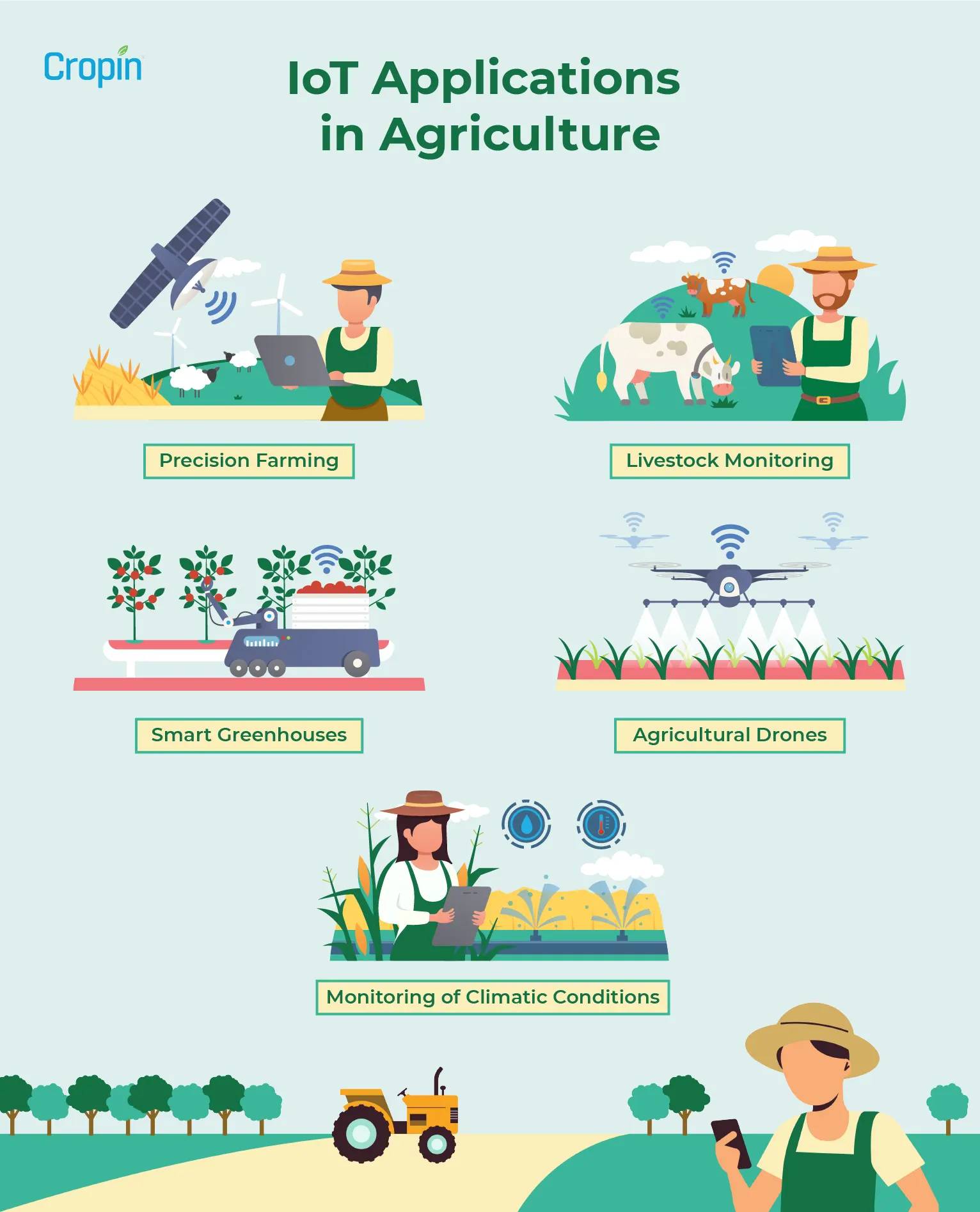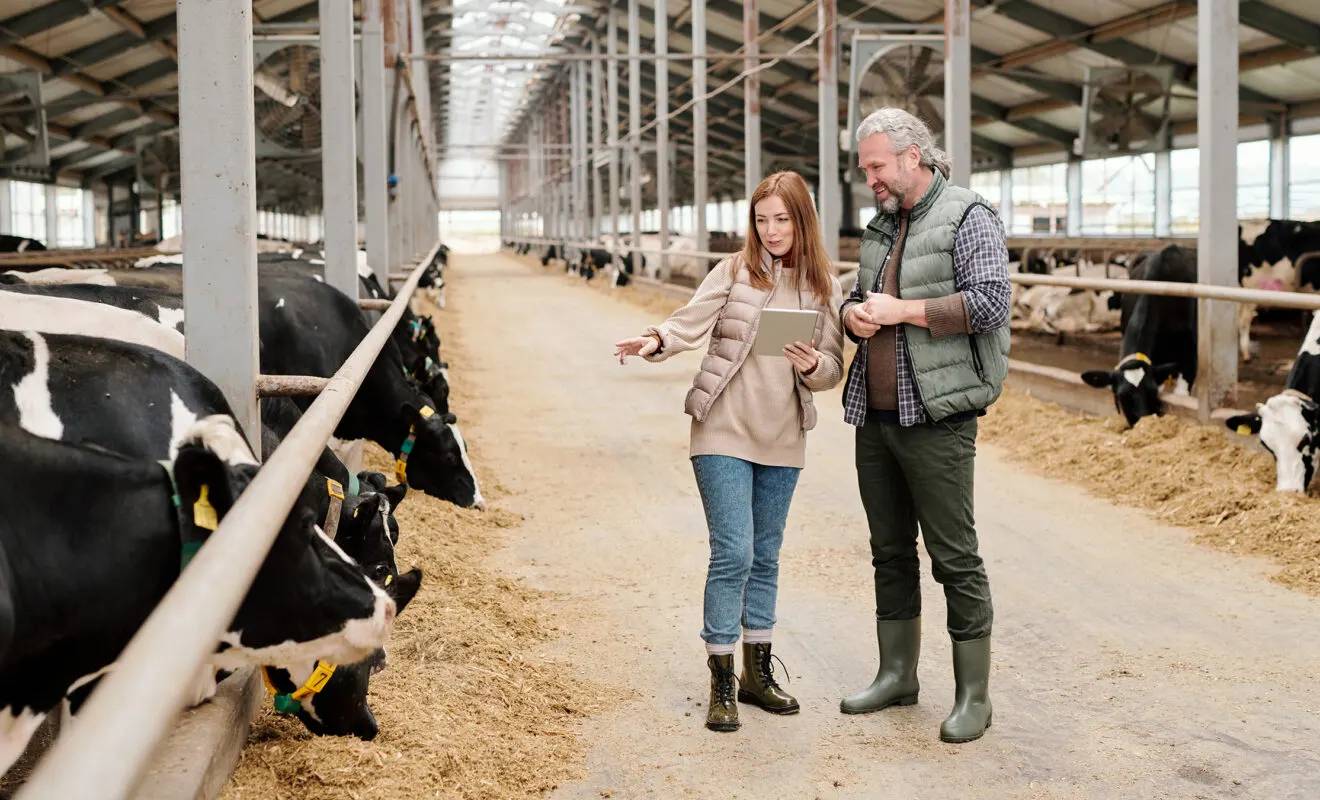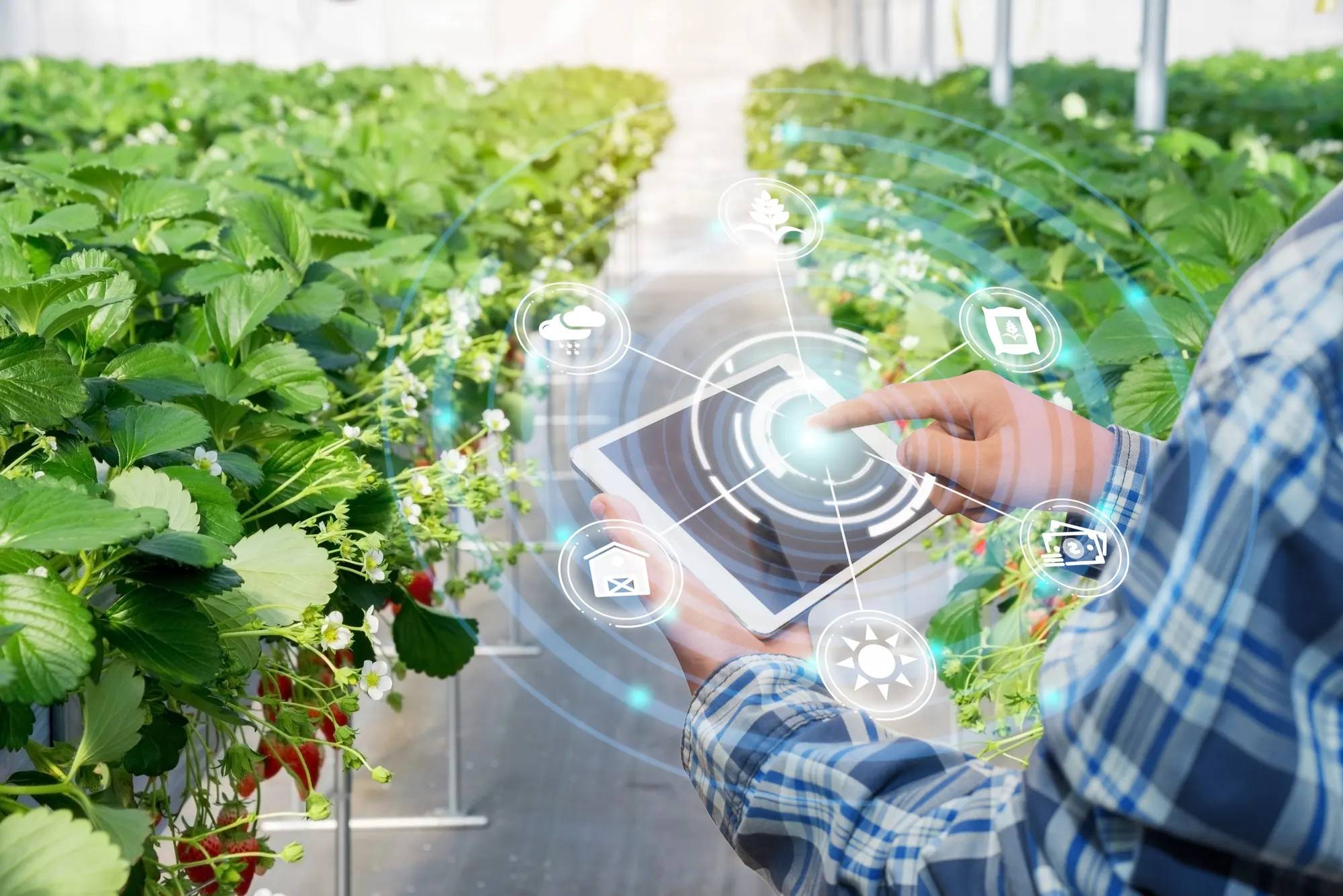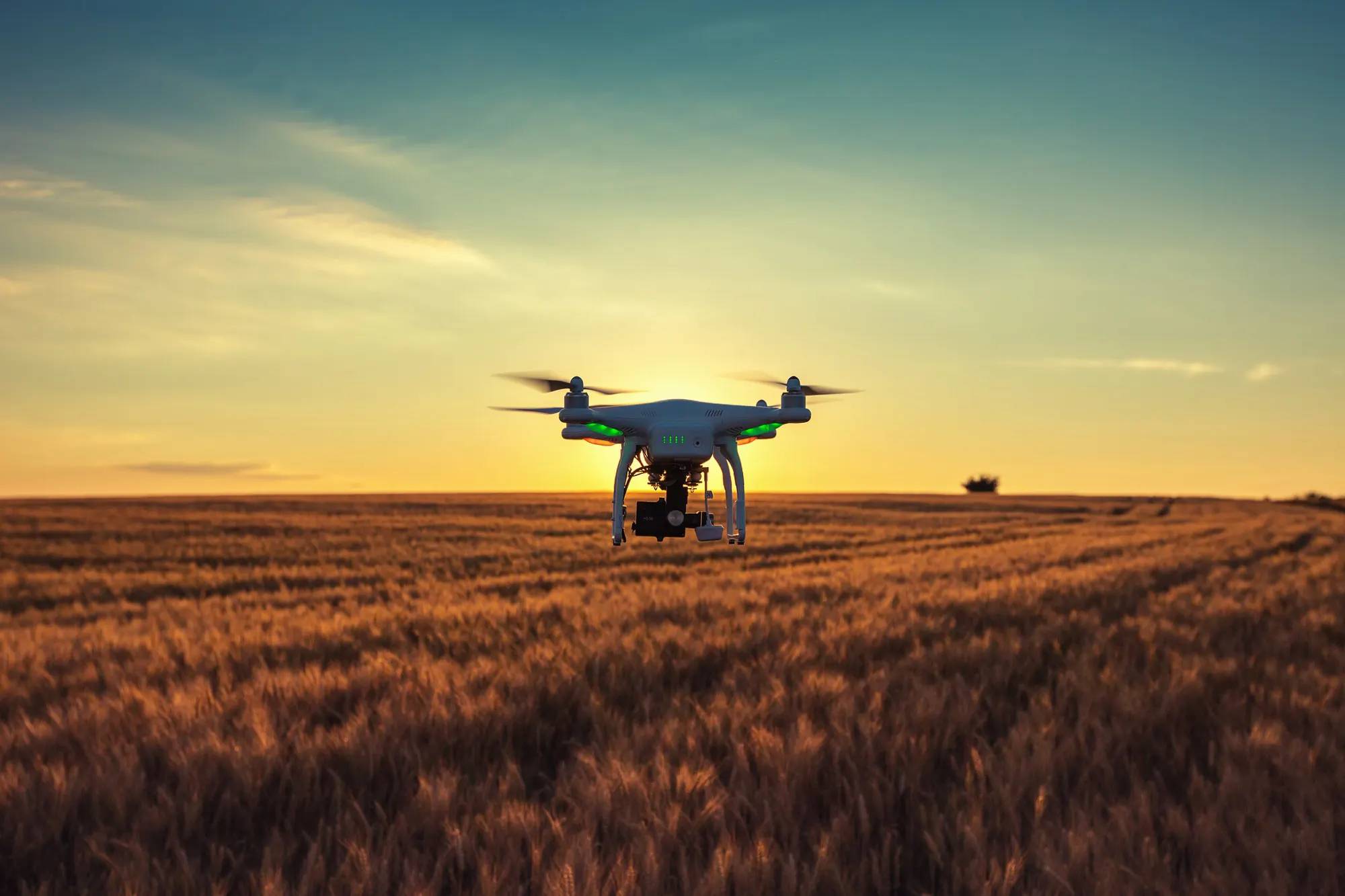As per the United Nations, Food and Agriculture Organisation (UN FAO) estimate, our food production capacity needs to increase by 70% in 2050 than it was in 2006.
Emerging technologies like the IoT in Agriculture seek to address the need for better efficiency and productivity in the agricultural sector. This transition from agriculture to agritech is essential for ensuring food security while cutting down on labor costs.
Today, precision agriculture is made more accurate by these IoT applications in agriculture, along with mobile devices with high-speed internet and data from reliable, low-cost satellites installed for the twin objectives of positioning and earth observation.
Let us now explore how IoT can advance agriculture for the better.

5 Best IoT Applications in Agriculture
1. Precision Farming
The world is moving towards sustainable agriculture to reduce its carbon footprint. In this context, smart farming technologies form an essential component by ushering in numerous innovative practices. As a result, farmers are now veering into a previously unexplored area — Precision Agriculture, also known as Precision Farming.
It increases productivity and financial benefits while reducing the amount of waste generated, thereby minimizing the damage to the environment.
This approach uses IoT sensing and communication technology to collect information on every aspect of the field ecosystem. For instance, data is collected on temperature, lighting conditions, soil health, and humidity.
- Crop Monitoring – Agtech companies harness IoT technology to view their farm conditions from anywhere around the world. Remote crop monitoring allows field staff and farming companies to detect weeds, pests, and other production risks. Further, it provides information regarding the weather and water stress. It allows them to proactively prevent extensive crop losses.
- Crop Management – Precision agriculture also incorporates crop management devices to ensure healthy crop growth. These devices need to be placed in the fields to collect accurate data regarding crops, ranging from temperature to leaf water potential.
2. Livestock Monitoring
Farm owners can now utilize IoT devices to detect the real-time health of their livestock. IoT sensors and smart devices can be attached to animals to monitor their health and physical location.
An animal is a primary cause of concern for farmers. Usually, farmers can reduce the costs of a wandering herd or the health of pregnant labor through drones that provide live cattle tracking facilities to the farmers. These devices send alerts to the owners regarding the health conditions of animals to separate unhealthy ones from the herd to prevent the spread of infections. Labor costs are reduced through the use of drones that provide live cattle monitoring facilities to the farmers.

3. Smart Greenhouses
Environmental factors are crucial to a crop’s development. Greenhouse farming enhances the productivity of crops by monitoring and controlling factors such as humidity, temperature, pressure, and light levels.
Manual intervention is not an effective way to manage greenhouses since it leads to high labor costs and energy loss.
IoT technology eliminates the requirement for manual interventions. It has created a system that can design a smart greenhouse capable of monitoring and automatically controlling the environmental parameters required for the crop’s growth. It makes a cloud server that provides remote access to the intelligent greenhouse along with control options.
For example, a WiFi signal can direct the sensors to switch on the lights, turn on a heater or open the window. It also provides access to automatic irrigation facilities. Hence, smart greenhouses are an effective solution for farmers to increase crop yield without manual intervention.

4. Agricultural Drones
IoT applications in agriculture include Unmanned Aerial Vehicles (UAVs) or drones for real-time data capturing and processing. These drones may either be ground-based or aerial-based.
The primary functions of these drones include assessing crop health, analysis of the type of soil and field, targeted spraying of fertilizers and pesticides on crops, crop planting, and irrigation.
In addition, these drones provide a bird’s eye view of the farm, thus making it easier and less time-consuming to survey agricultural lands. The drone data sheds light on several characteristics, including plant height, canopy cover, plant counting, weed pressure mapping, yield prediction, nitrogen content, and the level of chlorophyll, among others.
Such drones possess the potential to transform the agricultural sector through valuable insights regarding the yields of crops.

5. Monitoring of Climatic Conditions
Climate is a crucial factor for farming. Farmers can take preventive measures once they have complete information regarding the weather conditions. This knowledge is made accessible through IoT devices functioning as weather stations. Farmers place these devices in various locations across the fields from where they capture data regarding the hyper-local environment and store it on cloud servers.
Farmers use this data to understand the weather conditions that contribute to the choice of crops. Farmers can then take appropriate measures through precision farming to increase the yield of these crops.
Benefits of IoT Applications in Agriculture Identified by Important Studies
Several studies document the impact of smart farming on various crops.
- Research on California almonds incorporating smart agriculture showed that the water level consumed dramatically decreased since farmworkers could constantly monitor the soil moisture levels.
- A 1969 study found that the soil moisture level at or above 50% would deliver a maximum yield of potatoes. Therefore, farms that use precision agriculture can constantly monitor the soil levels to ensure the appropriate moisture level.
The incorporation of IoT applications in agriculture will transform this sector by bringing a host of benefits such as the ones listed below:
- Increased Efficiency: Farmers can monitor the crops in real-time, and therefore, predict issues and make informed decisions before they occur.
- Less Consumption of Water and Energy: Sensors across the fields help the farmers determine the appropriate resources required.
- Reduced Operation Costs: The utility of IoT in agriculture generates more profits since it leads to less manual intervention due to automated processes.
- Low Usage of Chemicals: IoT-based systems help farmers switch to cost-effective and eco-friendly farming methods through much-reduced consumption of harmful pesticides and fertilizers.
- Better Food Quality: Through the processes mentioned above, farmers can create the conditions necessary to improve the quality of the crops.
- Monitoring of Farms From Anywhere: Farming companies can monitor multiple fields in various locations from any part of the world.
Leading Agritech solution providers like Cropin are leveraging all these benefits with smart solutions. Cropin’s SmartFarm Plus, for instance, is a centralized platform that seamlessly integrates with other IoT devices to collect information and combine it with data captured from satellites and field staff. This technology aims to revamp the agricultural sector through smart solutions for a sustainable future.







